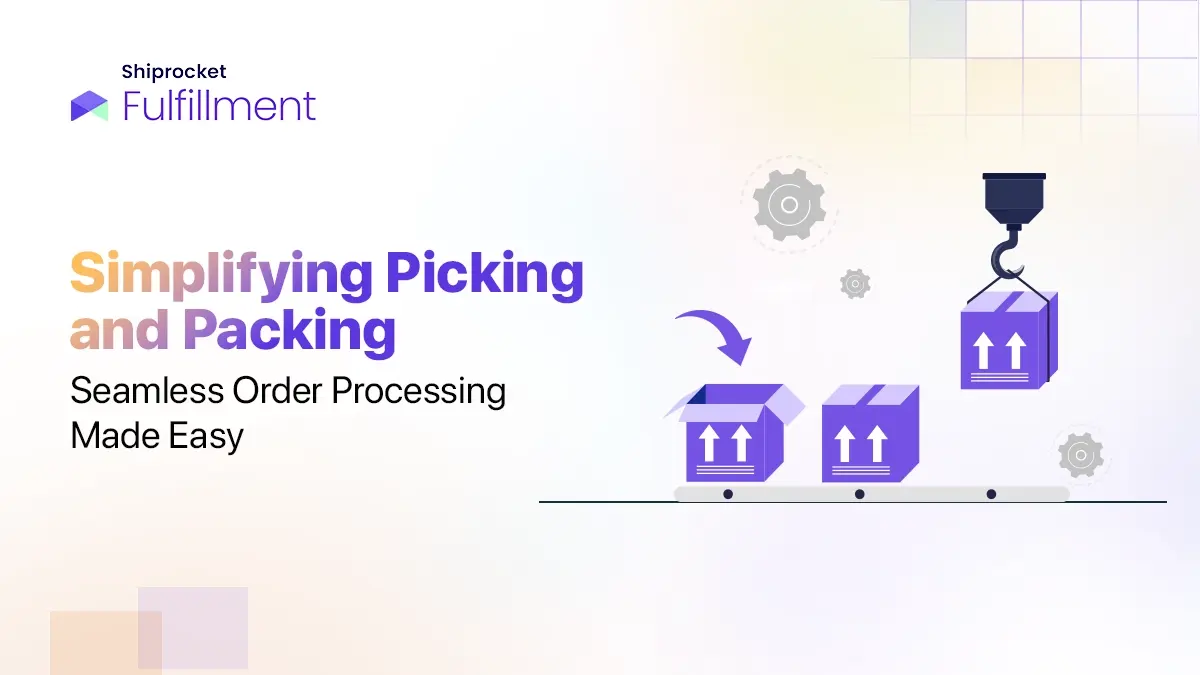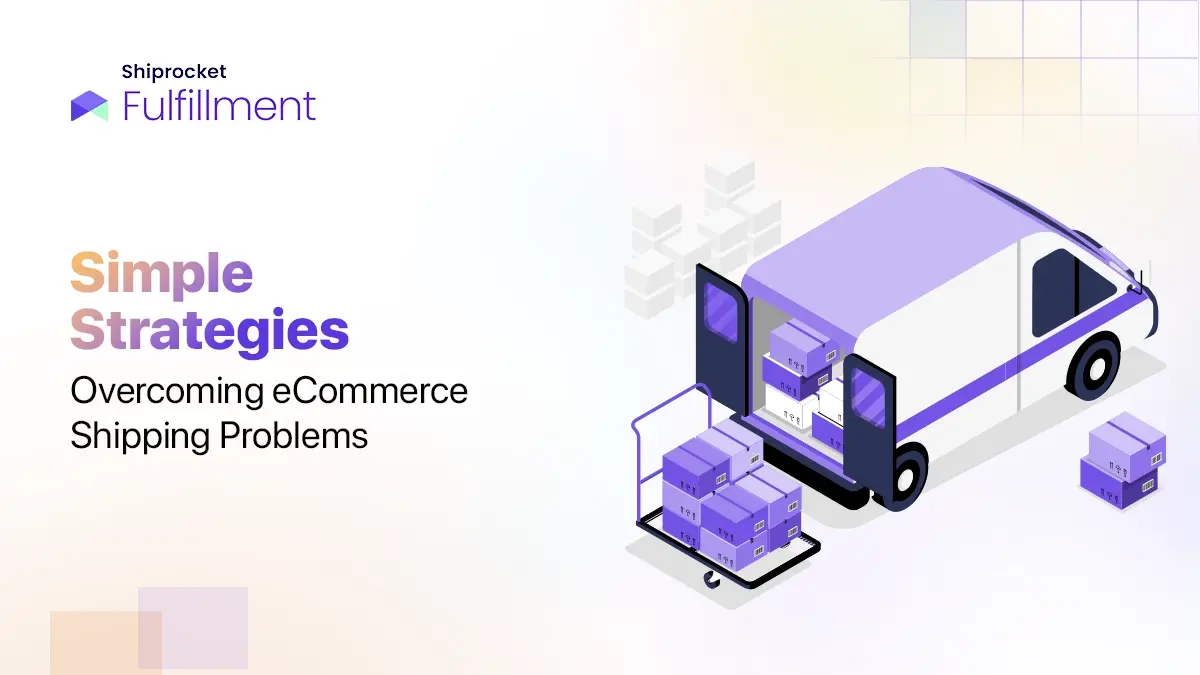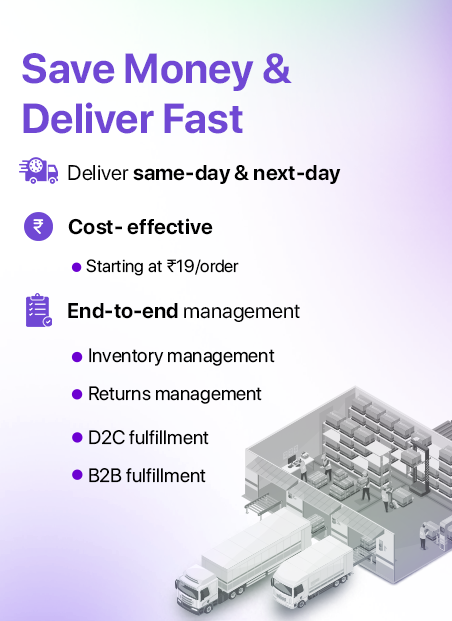- Introduction
- Analysing the Supply Chain
- Software for Analysing the Supply Chain
- The Mechanics of Supply Chain Analysis
- Types of Supply Chain Analysis
- Practical Applications of Supply Chain Analysis
- The Evolution of Supply Chain Analysis
- Navigating Tomorrow’s Supply Chain Challenges with Shiprocket Fulfillment
- Conclusion
Introduction
The supply chain is essentially the backbone of every business. It allows businesses to easily transport items from suppliers to factories and customers. However, any disturbance or blockage in this chain can impact your company’s sales, growth, and client satisfaction.

With so many actions, people, and organisations involved, the supply chain creates massive data. This is where supply chain analytics comes in, which involves analysing data from multiple systems to understand how goods are procured, processed, and distributed.
Let’s explore more about supply chain analytics and its evolution with technology.
Analysing the Supply Chain
Analysing the supply chain involves looking at every stage of the process, starting from obtaining supplies to delivering the finished products. The purpose is to point out areas that can be improved to give end-users quicker and more efficient service.
There are several stages in a supply chain. These stages involve buying raw materials, storing them, processing orders, managing inventory, and shipping the final product. Problems in any of the stages could cause the entire process to slow down. With supply chain analytics, you can identify these problems and fine-tune them to avoid client dissatisfaction and overcome any hindrances.
Supply chain analytics entails the following:
- Using historical data to predict consumer demand.
- Coordinating production or purchases with forecasted demand.
- Keeping track of inventory levels.
Benefits of Supply Chain Analysis:
- Recognising Possibilities and Difficulties: Supply chain analysis helps you identify opportunities and challenges by finding current risks and predicting future ones.
- Insights in Real Time: Having access to real-time data helps you better understand the profitability of your company, minimise inventory issues, cut down on shipping delays, and keep up with your consumer’s changing requirements. This data-driven strategy optimises the distribution of resources to cut expenses.
- Data-Informed Choices: Supply chain analysis is crucial as your company strives to be more data-driven. Executives can go past assumptions and rely on past performance and supply chain information to make well-informed decisions.
Software for Analysing the Supply Chain
Supply chain analytics software is crucial in modern business. There are two ways to integrate it: integrated into existing supply chain software or as a separate tool with full access to the data. Typically, both integrations are provided by top ERP vendors (Enterprise Resource Planning) and SCM experts (Supply Chain Management).
Advanced supply chain analytics software does more than basic reporting. It supports cognitive and prescriptive analytics by giving data-driven recommendations and insights. This is perfect for bigger businesses, enabling them to save costs and improve their supply chain performance.
Various software options available:
- ERP-Integrated Tools: This tool significantly automates business operations. Many ERP systems incorporate built-in instruments for supply chain analysis to make the process simpler.
- Independent BI Tools: Independent specialised business intelligence and analytics solutions allow you to integrate AI tools more efficiently with existing systems of the companies.
- Custom IT Solutions: If you have specific needs, an IT consultancy can provide a custom solution that is tailored to your specifications.
The Mechanics of Supply Chain Analysis
Here, we’ll delve into the mechanics of supply chain analysis, identify areas for improvement, and make informed decisions.
- Set Clear Goals: Define the scope of your analysis and the elements and metrics of the supply chain you will assess.
- Collect Data: Gather accurate and relevant information from your supply chain, like inventory levels, delivery times, costs, and past sales.
- Supply Chain Mapping: Create a visual map of your supply chain. Identify your supply chain network’s components, processes, and dependencies.
- Choose Key Measures: Decide key performance indicators (KPIs) that align with your objectives, like on-time deliveries, expenses, etc. Collect historical data on these KPIs to establish a baseline for analysis.
- Predict Future Demands: Analyse historical data of your company to understand customer demand trends and patterns to make accurate anticipations.
- Determine your Strengths and Weaknesses: Examine the internal and external elements that affect the supply chain of your company. Look at what you do well and what you need to improve.
- Examine your Suppliers: Analyse the performance of your suppliers. Consider things like reliability, quality, delays in delivery, and pricing.
- Examine Efficiency: Examine the effectiveness of each supply chain process.
- Risk Mitigation: Recognise possible threats to your supply chain and develop a strategy to deal with them.
- Use Technology Wisely: Look for ways to incorporate technology and automation into your supply chain.
Types of Supply Chain Analysis
Businesses can boost the effectiveness of their supply chains by concentrating on four main data analytics:
- Descriptive Analytics
This approach investigates past data about a business’s supply chain to assess its effectiveness. It provides data on important aspects, including inventory levels, lead times, and delivery performance. By examining the patterns and trends in your previous operations, you can make informed decisions about your future strategy.
- Diagnostic Analytics
Finding the underlying reasons for your supply chain problems is made easier with the use of diagnostic analysis. It is possible to determine the causes of supply chain disruptions, delays, and quality problems by analysing data from several sources, including suppliers, logistics companies, and customers. Information analysis is used in conjunction with diagnostic analysis to identify problems and provide preventive actions to avoid future threats.
- Predictive Analytics
Predictive analytics uses machine learning and statistical models to forecast future occurrences in the supply chain. Through the analysis of historical data, it can estimate demand, inventory levels, and shipment quality by identifying repeating patterns. With the aid of this function, supply chain operations can be optimised for reduced costs and increased customer satisfaction.
- Prescriptive Analytics
Prescriptive analytics uses optimisation algorithms and simulations to suggest ways to improve the operational effectiveness of your supply chain. This results in better decision-making and more efficiency.
Practical Applications of Supply Chain Analysis
In sales and operations planning, supply chain analytics helps align manufacturing supply with demand, ensuring your daily operations are inclined to meet the company’s goals. Analytics in the supply chain has several practical applications:
- Improving Risk Management: By examining patterns and trends throughout the supply chain, it finds existing and potential future risks.
- Enhancing Planning Accuracy Of Inventory: By reviewing customer data, you can discover factors influencing demand fluctuations, eventually improving planning accuracy.
- Streamlining Order Management: Supply chain analysis automates your order management process by combining data sources to evaluate inventory, predict consumer demand, and detect shipment issues.
- Simplifying Supplies Procurement: It arranges and examines expenses across various supply chain stages, enabling easier negotiations to save costs, etc.
The Evolution of Supply Chain Analysis
The emergence of cloud computing, which provides platforms, software, and IT infrastructure as a service, revolutionised supply chain analysis.
The invention of cloud computing enabled managing data from multiple sources. It has been further enhanced by robotic automation of processes like AI and software, which boosted business automation and data integration for supply chain analysis.
Within the domain of supply chain analysis, artificial intelligence techniques such as deep learning, machine vision for inventory tracking and enhanced routing models are evolving with technology across various business operations. Soon, supply chains will have more autonomy in managing and adapting to dynamic changes because of improved technology.
Here are some of the future trends to look out for:
- Blockchain Integration: An emerging trend is the integration of blockchain technology. This development holds the potential to enhance transparency, traceability, and trust within supply chains. As it gains momentum, blockchain will play a pivotal role in optimising diverse supply chain processes.
- Data-Driven Insights: There is an increasing reliance on data-driven insights driven by advanced analytics. This trend actively reshapes supply chain strategies, emphasising data’s importance in making well-informed decisions.
- Artificial Intelligence (AI) and Machine Learning: Applications of machine learning (ML) and artificial intelligence (AI) are becoming increasingly common in the field of supply chain analysis. These solutions effectively control risk and improve operational efficiency.
Navigating Tomorrow’s Supply Chain Challenges with Shiprocket Fulfillment
Shiprocket Fulfilment can help you meet changing customer expectations and address ongoing supply chain challenges. Adopting new procedures and cutting-edge technology is critical, and Shiprocket Fulfillment simplifies these complexities with its automated inventory and warehouse management solutions. These solutions are meant to reduce errors and ensure that your deliveries are always on time and satisfy customer demands.
By entrusting your order fulfillment to Shiprocket Fulfillment, you can significantly improve the delivery speed while lowering shipping costs. With Shiprocket Fulfilment as your dependable partner, you’ll be well-equipped to meet future supply chain issues with confidence and operational flexibility.
Conclusion
Supply chain analysis is more than just reviewing past performance, spotting trends, and identifying areas in need of development. Analysing the supply chain involves investigating every element, from raw resources to delivering goods to the doorsteps of consumers. It serves as a check where a single error can set off a chain reaction of errors, ensuring an efficient operation that exceeds customer expectations
It comprises determining customer demand using past data, synchronising production with forecasts, and preserving inventory. It enables your company to navigate this constantly evolving landscape with confidence, efficiency, and resilience.
A supply chain strategy is a comprehensive plan for planning, designing, executing, controlling, and monitoring supply chain activities.
By enabling data-driven decisions at the strategic, operational, and tactical levels, supply chain analytics strives to increase operational efficiency and effectiveness. It covers sourcing, manufacturing, distribution, and logistics.
A supply chain management focuses on strategic planning and decision-making, whereas a supply chain analytics course focuses on technical skills like data analysis and modelling.





